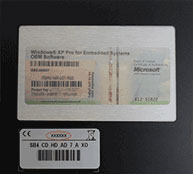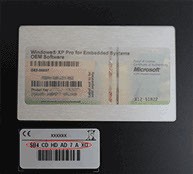The capacitive touchscreen is considered to be the first invention of its kind in the market. E.A Johnson was the first person to write about the technology in 1968. In 1971, the first touch sensor called the elograph was developed by Dr. Sam Hurst.
During the first years of its development, resistive touch took over and did better than capacitive technology. HP launched the HP-150 in 1983, and that was when the desktop PC touchscreen made an impact.This HP computer used infrared emitters to detect touch.
How it Works
The functioning of desktop PC touchscreen varies from one to another. Three components make it possible for touch screens to operate using varying mechanisms.
The sensor is the part of a touchscreen panel that responds to touch. It contains electrical current that generates a voltage variation when an object touches the surface, which indicates the location of a touch sensation.
Touch screens also consist of controllers that are responsible for converting signals that are recognisable to a device. The software then collects all the information, and a device reacts appropriately.
Impact on Production
Currently, touchscreen technologies have become must-haves on most devices, but some challenges come with them.
Although desktops offer numerous advantages in a variety of settings, their production with touch technology comes with very high costs that most manufacturers struggle with.
However, as industries such as medical, retail, marine and military still need to use desktop PC touchscreens, production costs are steadily reducing.
The Future
Some models such as the HP TouchSmart PC got quite popular, especially in home settings, and other manufacturers followed suit with better desktops.
Interactive touch screens have accomplished a lot in different industries, and more is expected. Over the years, touch displays have gotten better in resolution and what matters now is coming up with better software.
Sources:
Touchscreens, explainthatstuff.com
Who Invented Touch Screen Technology?, inventors.about.com


